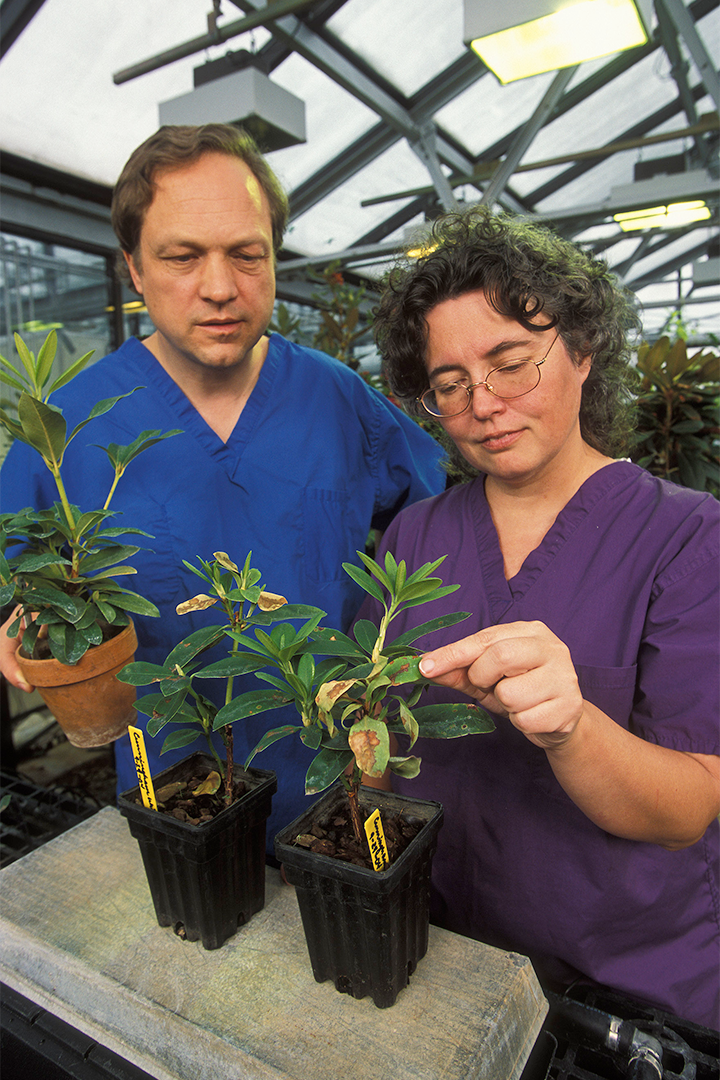
Did you buy a rhododendron this year? If so, read on!
Over the last few years, increasing numbers of dead ash trees (Fraxinus spp., Zones 3–9) have become a common sight in landscapes and on roadsides in the Mid-Atlantic region. Now imagine if we started losing oak trees (Quercus spp., Zones 4–9) at that rate. Fortunately, that’s not an immediate prospect, but it’s a possibility that we gardeners need to be aware of. A key part of preventing, or at least delaying, the spread of potentially devastating pest and disease problems is staying up-to-date about the issues that are threatening our region and the measures in place to keep them in check.
Quarantines—like those currently in place to slow the spread of the spotted lanternfly—are one way to minimize the spread of pests and pathogens, but they are only as effective as far as people follow the associated rules and restrictions. A recent quarantine breach has potentially exposed several regions, including ours, to sudden oak death (SOD), a disease caused by the pathogen Phytophthora ramorum. Often fatal on certain oaks, it can cause ramorum blight, a usually nonlethal leaf and twig blight, on many other trees and shrubs as well as oak.
For many years, quarantine measures have been in place to keep SOD from spreading outside areas of the West Coast. This spring, however, a shipment of nursery stock infected with Phytophthora ramorum was shipped to more than two dozen states, including Ohio, Pennsylvania, Virginia, and West Virginia.
Authorities are encouraging anyone who purchased a rhododendron (Rhododendron spp. and cvs., Zones 4–9) in 2019 to watch for symptoms of the disease, such as dark spots or blotches on leaves or shoot tip dieback. (You can find many more photos of symptoms on a range of woody plants here.)

Seeing any of these doesn’t automatically mean that your plant is infected with Phytophthora ramorum, because other issues can cause similar symptoms. A lab test is necessary to confirm the presence of this pathogen. Contact your county’s cooperative extension service or state department of agriculture to find out how to report a potentially affected plant, send in a sample for testing, and safely dispose of the plant if the disease is confirmed.
Officials are continuing to track the shipment and dispersal of affected nursery stock, and it’s possible that new information about potentially exposed plants and retail sources where they ended up may be released in the coming months. Visit the news section of your state’s department of agriculture to stay up-to-date with developments in your area—on this issue as well as others affecting gardens and landscapes in our region.

Nancy J. Ondra is the author of over fifteen books, including Grasses, The Perennial Care Manual, and The Perennial Matchmaker.


















Comments
Log in or create an account to post a comment.
Sign up Log in